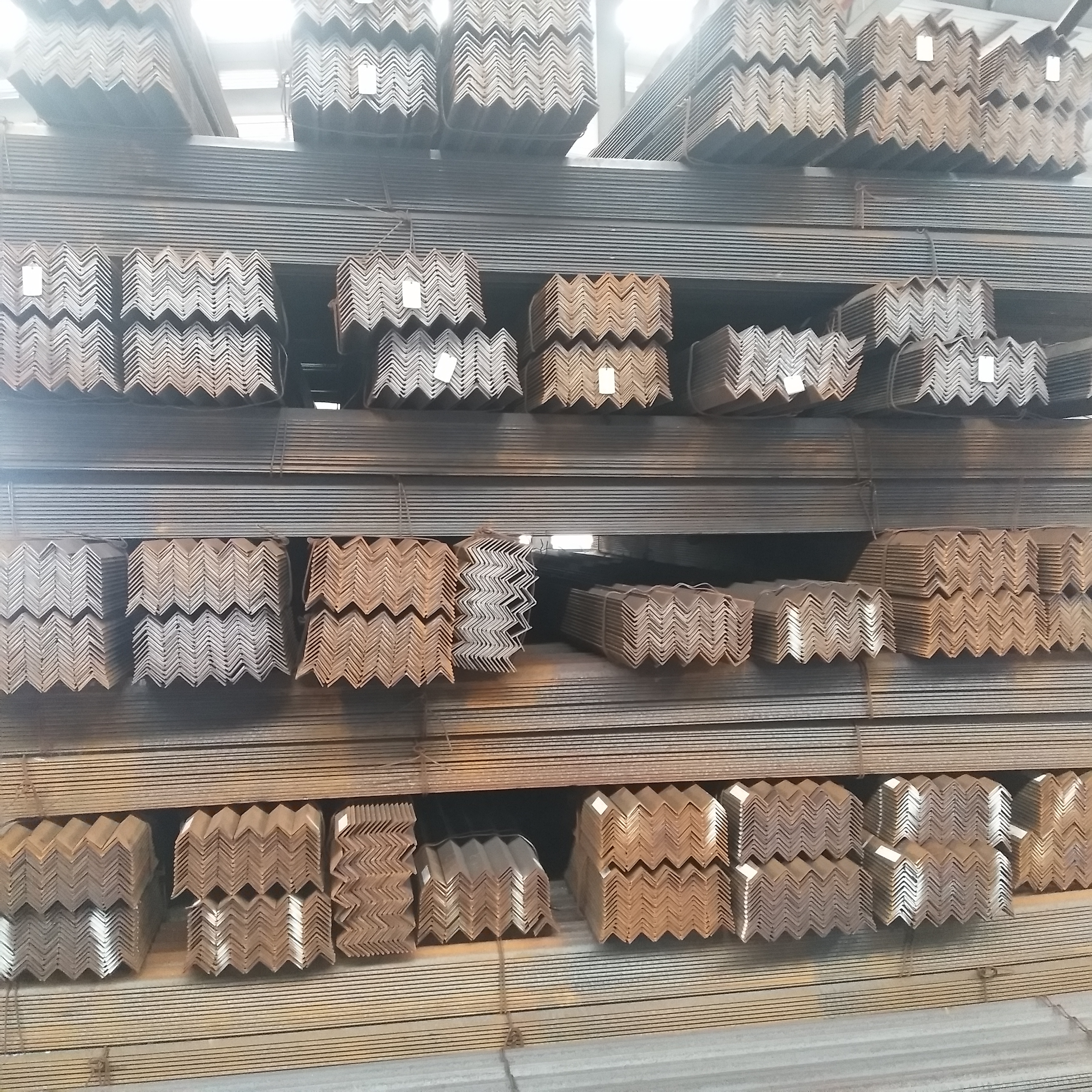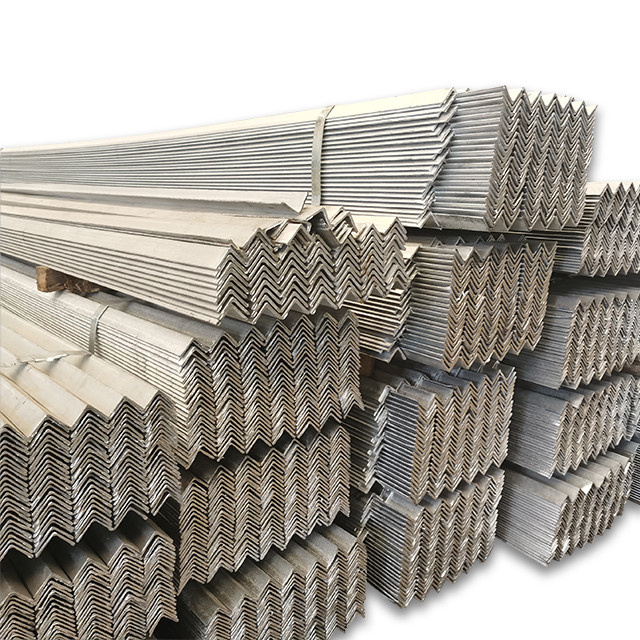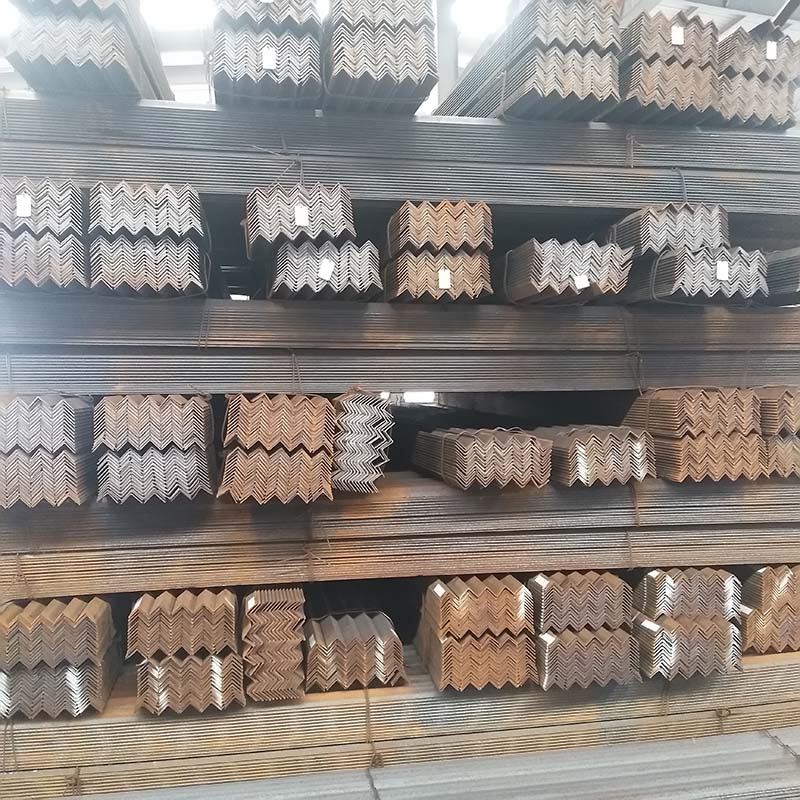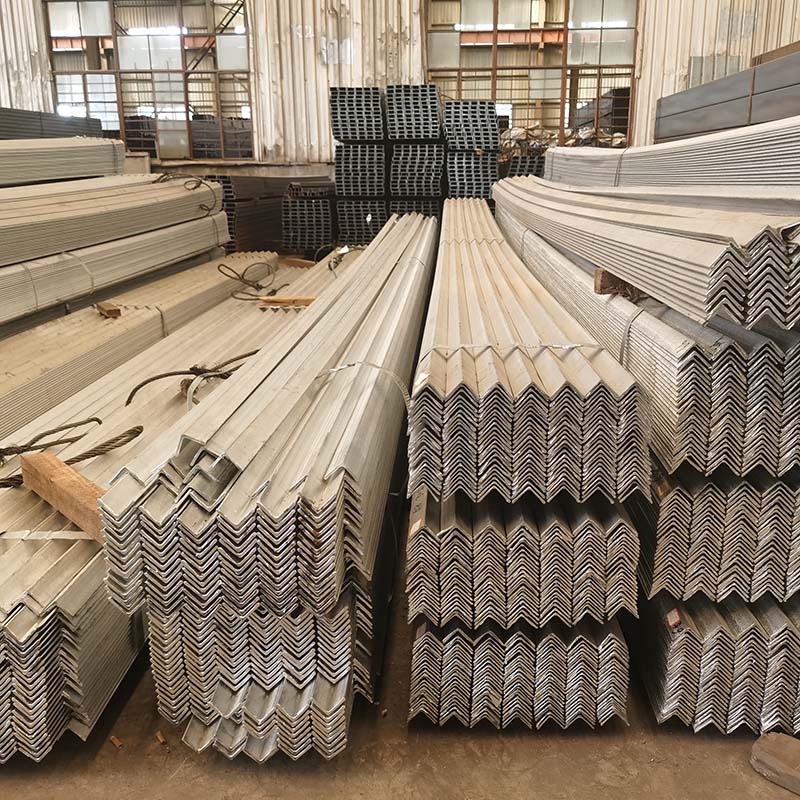Angle steel, commonly known as angle iron, is a long strip of steel with two sides perpendicular to each other forming an angle. The national standard for angle steel is to ensure that the lower deviation is within 0.25 of the national standard. Angle steel can also be divided into equilateral angle steel and non equilateral angle steel.

Understanding Angle Steel
Angle steel, as a carbon structural steel used in construction, is a simple section steel material mainly used for metal components and factory frames. Its application range is very wide, including various building structures and engineering structures such as beams, bridges, transmission towers, lifting and transportation machinery, ships, industrial furnaces, reaction towers, container racks, and warehouse shelves. In these applications, angle steel can be used to form various load-bearing components according to different structural needs, and can also serve as connectors between components.
From a production perspective, the raw steel billets for angle steel are low-carbon square steel billets, and the finished angle steel is hot-rolled and usually delivered in a normalized or hot-rolled state. This type of steel requires good weldability, plastic deformation performance, and a certain mechanical strength in use to meet the needs of various complex working conditions
Benefits of Angle Steel
1. Structural stability and strong bearing capacity: The cross-section of angle steel is L-shaped, which gives it high bending strength and bearing capacity. In building structures, angle steel can effectively transmit and disperse loads, ensuring the stability and safety of the structure. Therefore, it is often used in the support, frame, beam, column and other parts of building structures, as well as in the construction of heavy structures such as bridges and power towers.
2. Good plasticity: Angle steel is easy to process and can be processed and shaped through cutting, bending, drilling, and other methods to meet various complex structural and shape requirements. This enables angle steel to have greater flexibility and adaptability in the manufacturing process, and can cope with diverse application scenarios.
3. Good anti-corrosion performance: In order to improve the rust prevention performance of angle steel and extend its service life, the surface of angle steel is usually treated with hot-dip galvanizing and other methods. This treatment method can form a dense metal protective layer on the surface of the angle steel, effectively preventing external environmental erosion of the steel.
4.Moderate price: Compared to other metal materials, angle steel has a relatively low price and is suitable for large-scale procurement and use. This gives angle steel a significant advantage in cost control, as it can reduce overall construction costs while ensuring structural stability and safety.
5.Wide applicability: Angle steel is widely used in various fields such as construction, machinery manufacturing, bridge construction, etc. due to its excellent performance and wide applicability. Whether in the construction of steel structure factories, the manufacturing of mechanical equipment, or the construction of roads and bridges, the presence of angle steel can be seen.
6.Lightweight and earthquake resistant: Compared to other heavy steel materials, angle steel is relatively lightweight, which helps reduce the weight of buildings and improve their seismic resistance. During natural disasters such as earthquakes, lighter self weight can reduce the inertia force of buildings and lower the risk of structural damage.
Applications of Angle Steel
1.In the field of architecture, angle steel is mainly used in steel structure buildings and bridge construction to support and reinforce key parts of buildings, such as beam column nodes, stairwells, roof structures, etc. Meanwhile, angle steel can also be used to make building components such as steel frames, columns, and beams, providing a solid framework for modern architecture.
2.Mechanical field: Angle steel is an important material for manufacturing various mechanical equipment and components, such as machine bases, brackets, transmission shafts, etc., providing stable support and transmission functions for mechanical equipment.
3.In the field of ships, angle steel is mainly used for the construction and reinforcement of ship structures, such as ship frames, decks, bulkheads, etc Structure ensures the safety and stability of the vessel.
4.In the field of electricity, angle steel is mainly used as a support structure for power towers and transmission lines, supporting high-voltage transmission lines and substation equipment
In addition, angle steel is also used in various other fields such as petrochemicals, metallurgy, and environmental protection



Conclusion
The manufacturing material of angle steel is generally hot-rolled or cold drawn steel plates, which are processed into the required length and shape through cutting and bending. There are various sizes and specifications of angle steel, such as 20 × 20mm, 25 × 25mm, 30 × 30mm, etc., and customization can also be made according to needs. The surface of angle steel products is smooth, without burrs, and has good toughness and bending strength, which can withstand certain pressure and load.
Angle steel, as a fundamental and important steel profile, plays an irreplaceable role in modern industrial production and construction due to its unique structural advantages, good processing performance, and wide application fields.
Post time: Oct-10-2024

